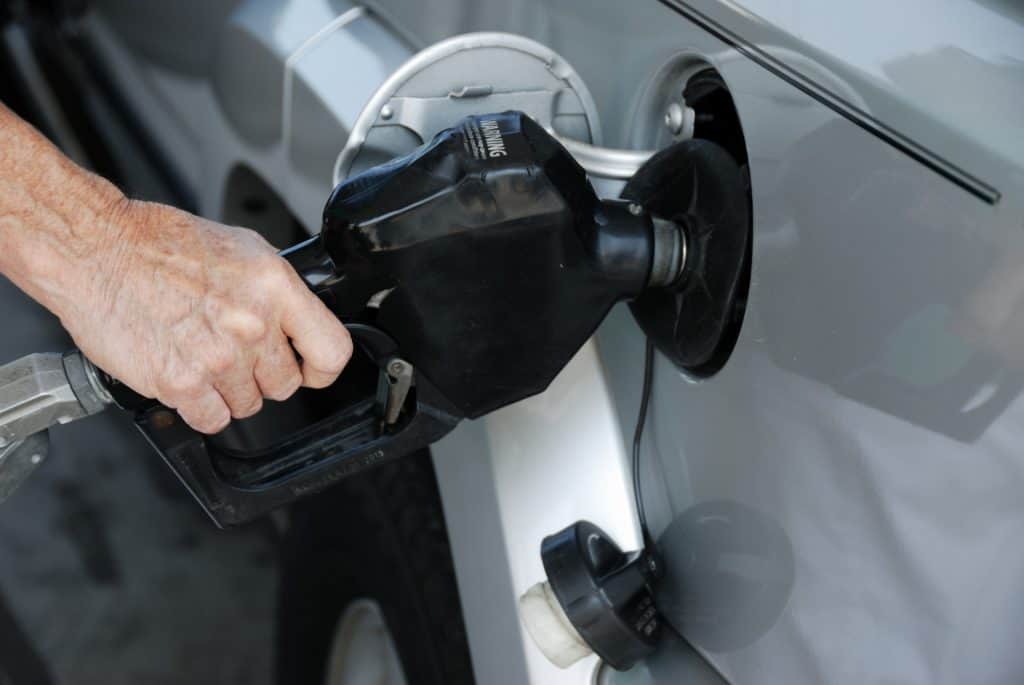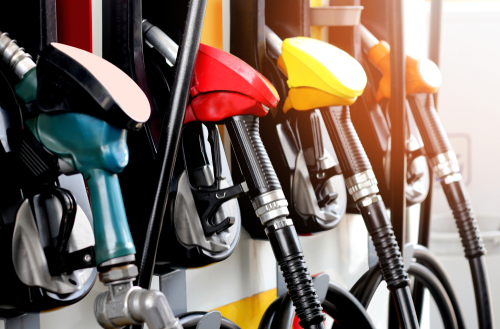
Imagine this: you pull up to the pump, juggle your coffee cup and phone, and start fueling—only to realize a minute later that your engine’s still humming.
Leaving your car running while pumping gas might seem like an innocent slip, but it carries real risks and consequences that every driver—especially those of us who remember simpler times under the hood—should understand.
Why Leaving Your Engine On at the Pump Is Risky

Modern fuel pumps handle highly flammable vapors. Even a tiny spark from an idling engine can ignite gasoline fumes. Gasoline vapors are heavier than air, so they can settle around your wheels and undercarriage, creating a hidden fire hazard.
- Vapor ignition: Fuel vapors can catch fire from hot surfaces like exhaust manifolds.
- Static electricity: Climbing in and out of your vehicle can build static charge, which could discharge near the pump nozzle.
- Distraction factor: A running engine means the driver might be distracted—texting, checking directions, or sipping that coffee—rather than watching for hazards.
Legal and Financial Consequences of Idling at the Pump
Laws vary by state, but many jurisdictions treat leaving your car running while fueling as a violation of local fire codes or environmental regulations. You could face:
- Fines: Some states impose penalties for violating pump-safety rules—anywhere from $50 to several hundred dollars.
- Liability: If your idling car sparks a blaze or a spill, you could be held financially responsible for damage to the station, other vehicles, or bodily injury.
- Insurance headaches: Your auto insurer might shrug off a fire started while fueling as negligence, leading to denied claims or higher premiums.
What to Do If You Realize Your Car Is Still Running
- Stop fueling immediately. Turn off the pump, hang up the nozzle, and step away from your vehicle.
- Switch off the ignition as soon as you’re safely outside the danger zone.
- Check for fuel spills. If you overflowed, alert the station attendant so they can clean it up properly.
- Stay calm. Quick action is key—putting the engine off and addressing any spill will minimize risk.
Simple Habits to Prevent This Slip-Up
Developing a brief “pump routine” will help you remember to kill the engine every time:
- Engine-off checklist: As soon as you park, turn off the ignition, set the parking brake, and lock your doors.
- Phone out of hand: Avoid handling your phone until fueling is done. If the call’s urgent, step aside off the pad.
- Visual reminder: Place a sticky note on your dash—“Engine Off!”—so you see it before you exit the car.
- Key-fob pause: Hold onto your key-fob until after you’ve finished pumping; if you’ve taken it out of the ignition, you’re less likely to leave the engine running.
Fuel Pump Safety Tips for Every Driver
Whether you’re cruising a ’69 Camaro or a modern sedan, these gas pump safety guidelines can save you time, money, and worry:
- No smoking or open flames within 25 feet of the pump.
- Stay off your phone while handling the nozzle—distractions lead to mistakes.
- Ground yourself by touching the metal pump before you grab the nozzle to discharge static.
- Avoid topping off once the pump clicks off; overfilling can damage your vehicle’s evaporative emissions system.
- Keep children and pets inside the car during fueling—they’re vulnerable to vapors and traffic hazards.
Understanding Insurance Implications
If your oversight leads to a fire, spill, or other damage, you’ll need to tap into your comprehensive auto insurance coverage. Remember:
- Deductible costs: You’ll be on the hook for your policy deductible before coverage kicks in.
- Claim denial risk: If the insurer deems the incident “preventable” or due to negligence—such as idling at the pump—they may deny your claim.
- Premium hikes: Even a paid claim can trigger higher rates on renewal.
Before you fill up next time, check your policy. Knowing your coverage limits can guide how you respond if something goes wrong.
Special Considerations for Older Vehicles
Classic cars and vintage trucks often have different fueling quirks:
- Manual chokes can keep the engine running longer if you forget to turn off.
- Leaky seals on older gas caps may allow more vapors to escape while fueling.
- No “auto-shutdown” at the pump nozzle might tempt you to top off, increasing spill risk.
If you own a classic ride, take extra precautions: double-check that choke’s off, replace old seals, and avoid topping off the tank.
What Gas Station Attendants Want You to Know
We’ve all seen the signs for fire extinguishers and “stop engine” stickers. Behind the counter, attendants are trained to spot and address unsafe behavior. They appreciate:
- Clear communication: If you spill, let them know immediately—they’ll handle cleanup.
- Compliance: Following posted rules keeps everyone safe and the station running smoothly.
- Courtesy: Rushing or crowding other customers at the pump only heightens risk.
A friendly nod and a quick “thanks” go a long way when you’re helping maintain safety.
Tools and Tech That Can Help
Modern gadgets and car features can make forgetting much harder:
- Automatic engine-shutoff: Some newer models kill the engine when you shift into park—perfect for absentminded moments.
- Fuel-cap reminders: Dashboard alerts warn if the cap’s loose. Similar alerts could be programmed for idling at the pump.
- Smartphone apps: Gas-stop apps can prompt you to complete routines—engine off, cap on, payment done—before you drive away.
Explore your car’s menu or aftermarket accessories to see what features you can activate.
Embrace a Safer, Smoother Fill-Up
We all get distracted—even seasoned drivers who once swapped carburetors by hand. Leaving your car running while pumping gas is a slip that can lead to fines, damage, or worse. By adopting a simple routine, using visual cues, and staying aware of your environment, you’ll fuel up safely every time.
Next time you pull into the station, take a breath, follow your checklist, and keep that engine quiet. A little extra mindfulness adds up to big peace of mind—so you can enjoy the open road without a hitch.
